When you first hear about a mysterious monkey-like creature wandering the Bukit Timah forests of Singapore, your mind goes in one of two directions: 1. Singaporeans want their own yeti. 2. A dedicated local troll. Then you learn that sightings of the cryptid date as far back as 1805, and you start rethinking.

The only explanation offered by the local nature reserve officials is that the animal was a misidentified crab-eating macaque. Um, sure, except that this species of monkey is no taller than your knee, and the sighted creature is as tall as a grown man. Nobody’s buying it, folks!
Steller's Sea Ape
This creature was first supposedly sighted by George Steller, a German zoologist, who sailed in the waters around Alaska in 1741. Steller reported a marine mammal of sorts curiously approaching the ship.

It reportedly had a large, densely-furred body, a whiskered, dog-resembling face, and the inquisitive and playful nature of a monkey, which prompted the creature's name. After watching the animal for about two hours, Stellar tried to shoot and capture it but missed. (Trust a human to see something cool and promptly look for a shotgun.) It is now speculated that the animal was a misidentified northern fur seal.
Isshii
Lurking in the water of Lake Ikeda in Japan, Isshii is the Japanese answer to the Loch Ness monster. Local myth says that the beast was once a mare whose foal was taken by a samurai. Desperate, she transformed herself into a huge, water dinosaur/reptile-like creature, and went in the water, often surfacing to look for her baby.
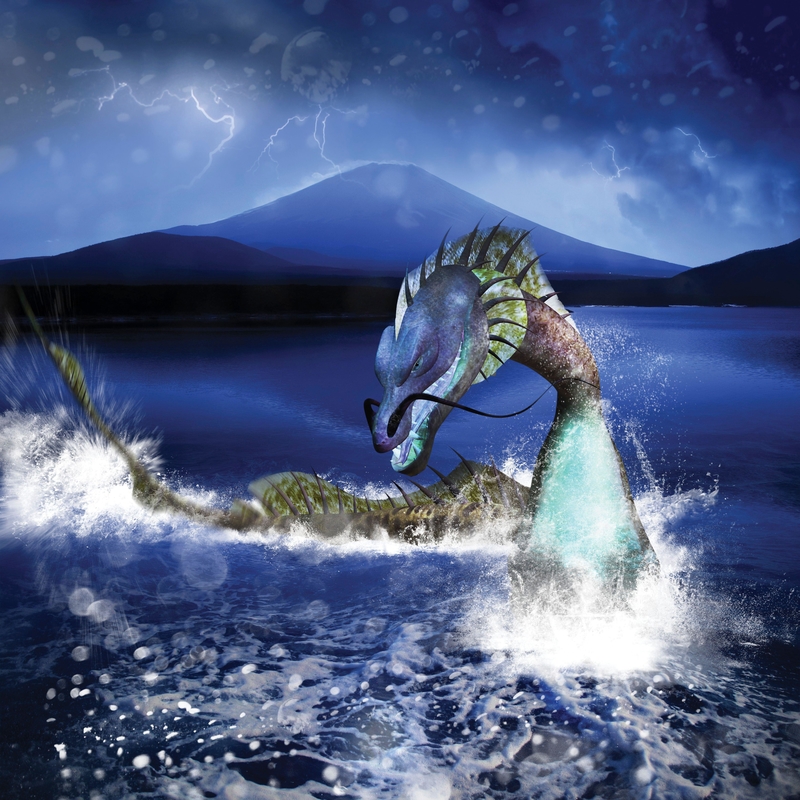
Those who claim to have seen it report a long (about 30 feet), large, black creature with two humps. The only video footage of it is often explained as a misinterpreted shot of big lake eels swimming near the surface.
Chuchunya
No, not chihuahua, those are undisputedly real. Though some would argue that their nature is just as monstrous as an underworld demon of war.

The Chuchunya, living its cryptic life in the frozen land that is Sibiria, is a huge bipedal, hairy hominid. Reminiscent of the famous yeti, it mostly proves that the world is full of stories about hairy quasi-human things hiding in forests.
Thunderbird
Okay, anything with a name this cool has got to be created by comic book writers, right? Well, not necessarily, because as far as we know, the indigenous population of North America was not into comics.

The indigenous myth says the bird could flap its wings and create thunder. Now, it's not like we have ancient accounts of those people to report to you, but it is theorized they based the legend on the local fossils of pterosaurs.
Mongolian Death Worm
Please excuse us as we slowly back away from the screen. Probably too much of a threat for any exterminator, this creature lives (supposedly) in the Gobi desert. What a wonderful reason to never visit.
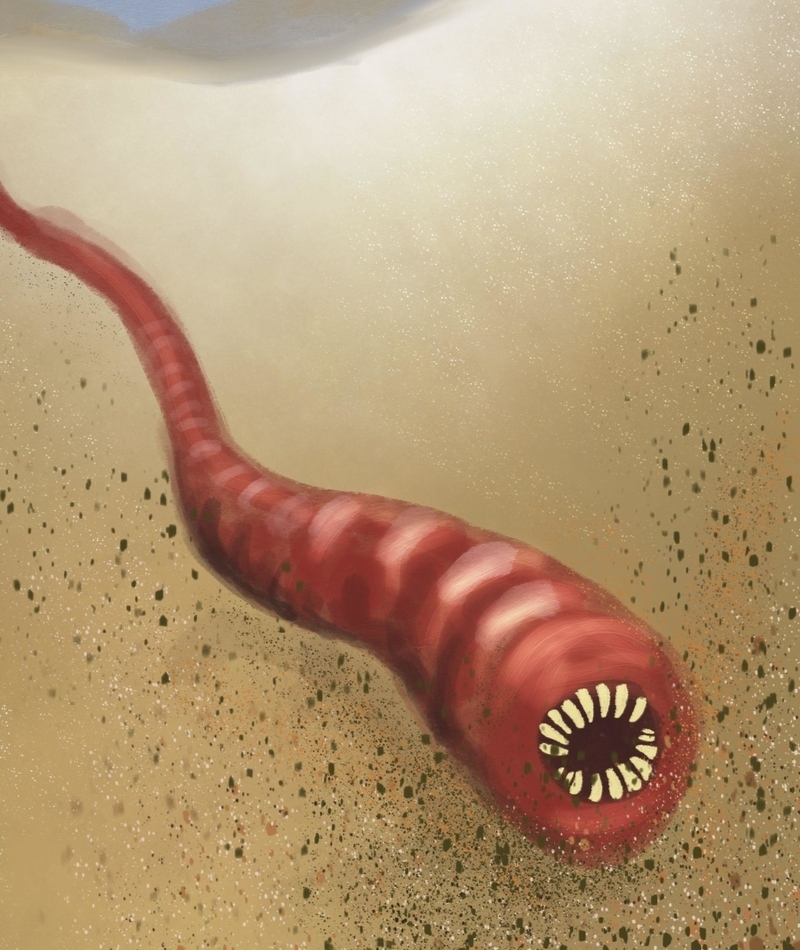
A 1926 book written by American paleontologist Roy Chapman Andrews, includes accounts of Mongolians describing the monster as a desert poisonous sausage with no legs or head. If you think this sounds too much like a snake, you're probably right. Locals who claim to have seen the reptile were shown a tartar sand boa and confirmed that this was, in fact, the death worm.
Yeti
Often referenced as the Abominable Snowman, it seems to us that this Himalayan ape gets a wrongfully bad rap. Going about its business in the cold mountains of east/southeast Asia, it sounds pretty innocent.
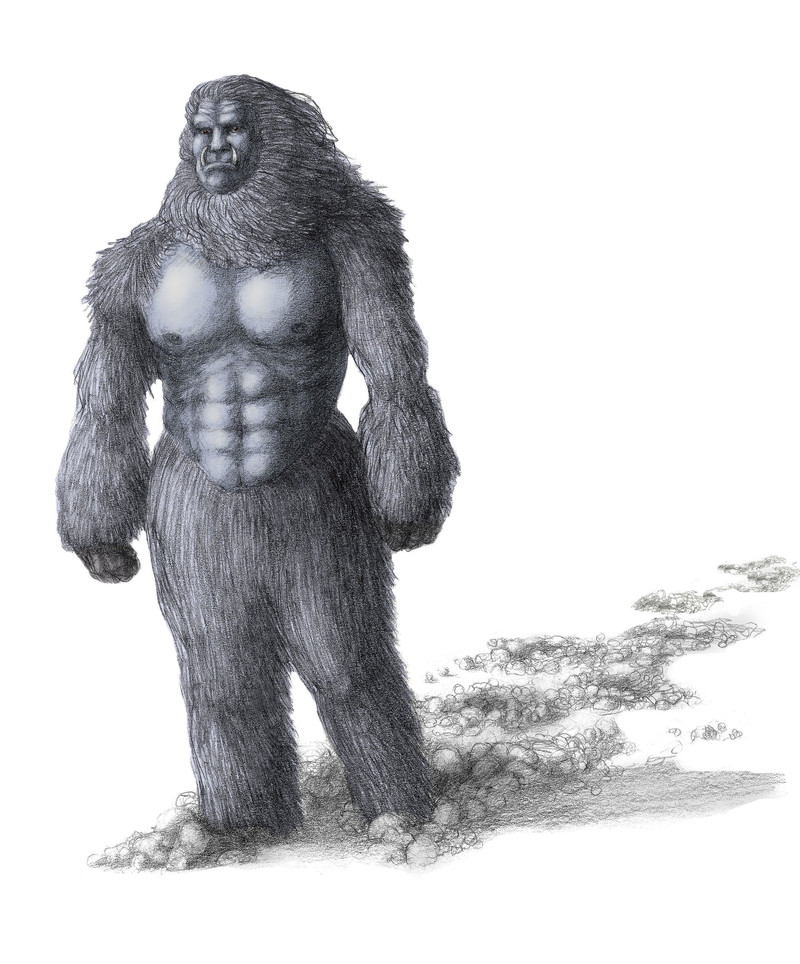
Local tribal folklore can get pretty wild, especially with the Sherpa people. However, investigated "remains" and evidence of this cryptid normally have a simple explanation, usually attributing them to local monkey or bear species.
Mokele-mbembe
If local lore is to be believed, this African lake monster is essentially a Congolese dinosaur. The 1909 autobiography of Carl Hagenbeck features the first written account of this beast.

Visually speaking, Mokele-mbembe probably looks like a Brontosaurus. However, Hagenbeck claimed to have heard from two different locals about an animal described as "half elephant, half dragon" and if you don't think that's cool then you're welcome to look for the nearest exit. Those who wish to stick to animals they know, excuse this monster as a misidentified rhino.
Mamlambo
While this South African monster has its roots set in Zulu mythology river deity, it is also attributed with several actual deaths. Sighting reports of the creature vary from sea serpent to a less-then-typical mermaid, and sometimes — a nearly 70-foot-long, glowing, scaley reptile hybrid with a horse's head, a fish's body, and a snakelike neck.

This terrifying creature is somewhat of a zombie, eating its victims' brains and faces. Living in the Mzintlava River, it's supposedly behind nine deaths of people who had pieces of their heads and necks eaten. Police said it was water crabs. You choose what to believe.
Owlman
Comic books taught us that anything that ends with 'man' is a superhero. But the only kind of super this is, is super creepy. This winged bipedal was sighted by St Mawnan and St Stephen's Church in England.
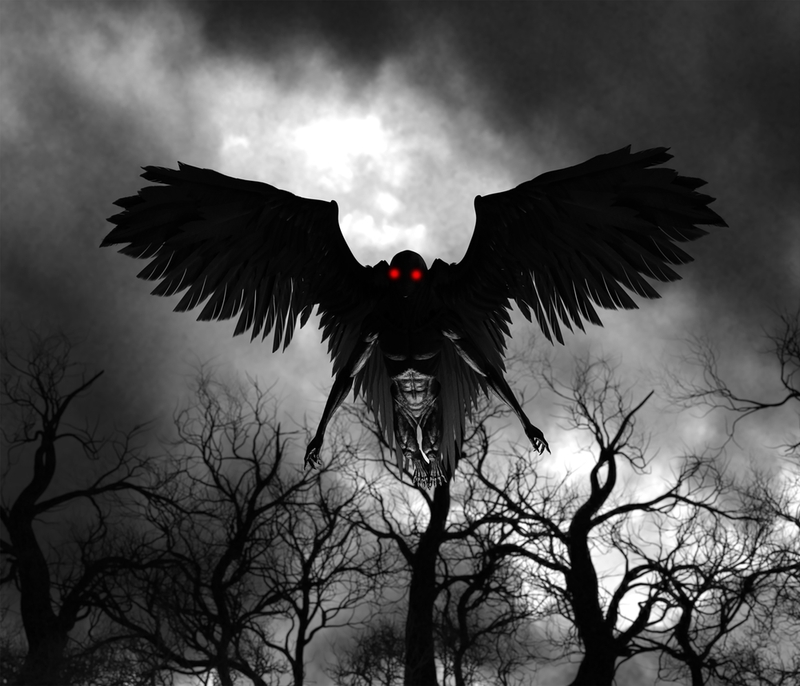
Writer Tony Shiles investigated two sightings of this feathered birdman, each sighting made by two different sisters. The first two sisters drew the creature and the second two described it as a human-sized owl with pointy ears, pincer-like claws, and glowing eyes. Those two sightings were made in 1976, though other reports of the monster being seen/heard kept popping up until the year 2000.
Chupacabra
In 1995, eight Puerto Rican sheep were found dead with three puncture wounds around the chest and completely drained of their blood. A few months later, the town of Canóvanas in Puerto Rico has seen a similar death of 150 livestock animals. Soon, different countries in the Americas reported similar cases.
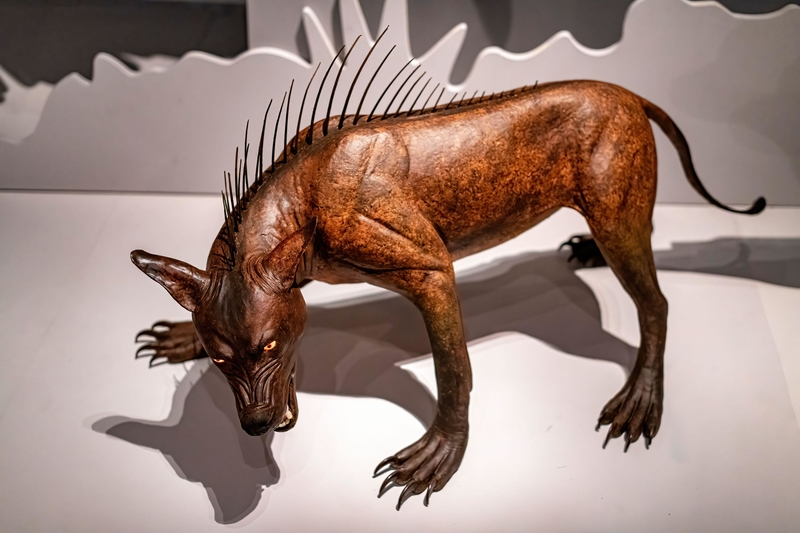
The creature behind those deaths is named Chupacabra and it supposedly looks just as terrifying as it sounds: standing at about 3-4 feet, it has an iguana-like skin complete with back spines and hops like a kangaroo. The official explanation for those animal deaths is infected wild dogs.
Ozark Howler
This creature has nothing to do with the Netflix hit "Ozark". Well, maybe apart from the fact they would both be cool to watch. The most recent sightings of this animal were made in 2014 and 2015. They report the beast to look somewhat like a gray bear with long, shaggy fur.
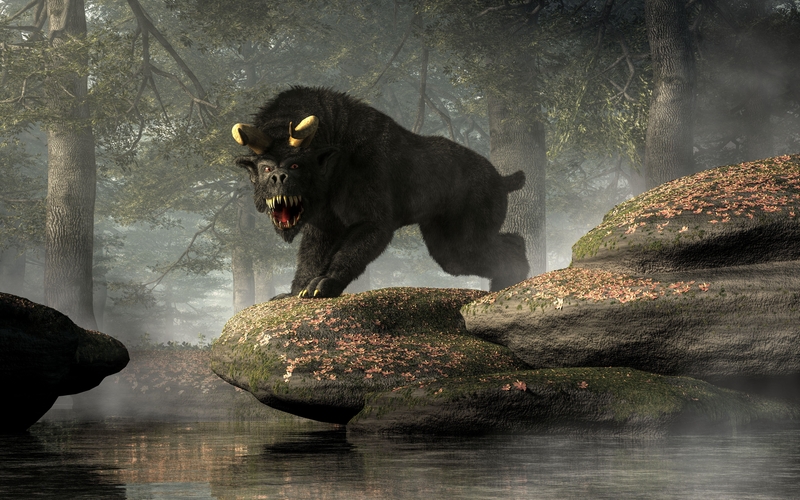
While the 2015 images may have been faked, we are still left with the 2014 report of a motorist nearly crashing into an unidentified bear-sized mammal by a gas station in Springdale. The howler quickly ran away, leaving us with more questions than answers.
Cadborosaurus
Found (allegedly) in Cadboro Bay, British Columbia, this sea creature also answers to the nickname Caddy. Well, it doesn't really answer, but you get it. Over the years there have been more than 200 sightings of this beast, describing it as big and elongated with a head resembling a horse and two powerful flippers propelling it forward.

Supposed carcasses of a Caddy were found in several places but were usually excused as different species of either shark or whale. Two different individuals (in 1968 and 1991) have also claimed to have captured a baby Caddy but released it soon after.
Bukit Timah Monkey Man
When you first hear about a mysterious monkey-like creature wandering the Bukit Timah forests of Singapore, your mind goes in one of two directions: 1. Singaporeans want their own yeti. 2. A dedicated local troll. Then you learn that sightings of the cryptid date as far back as 1805, and you start rethinking.

The only explanation offered by the local nature reserve officials is that the animal was a misidentified crab-eating macaque. Um, sure, except that this species of monkey is no taller than your knee, and the sighted creature is as tall as a grown man. Nobody's buying it, folks!
Nahuelito
Named after lake Nahuel Huapi where it lives, this water monster was first heard of by an Old World explorer speaking to native Argentinas before the Americas were conquested. Sightings kept piling up, even joined by a 1960 report of the Argentinian Navy! They said they have chased an object in the water for 18 days without capturing or identifying it.
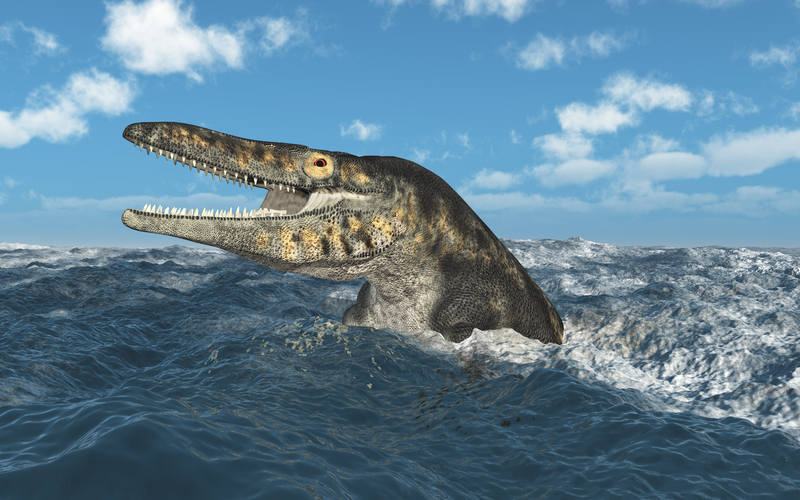
In 1988, the Río Negro newspaper was sent anonymous pictures of the being. Taken with a simple camera by the coast of Bariloche, the picture shows a snakelike being swimming in wavelike motions, its humps visible above the water. We'll take it as proof.
Minhocão
Something between a fish and a worm, the Minhocão is part of Brazilian folklore. Said to be anywhere between 65 to 260 feet, it was first described to the Old World in 1846. Apparently living in and around lakes, the monster was said to be so powerful it actually dragged cattle into the water, where it consumed them. *Gulp* How delightful.
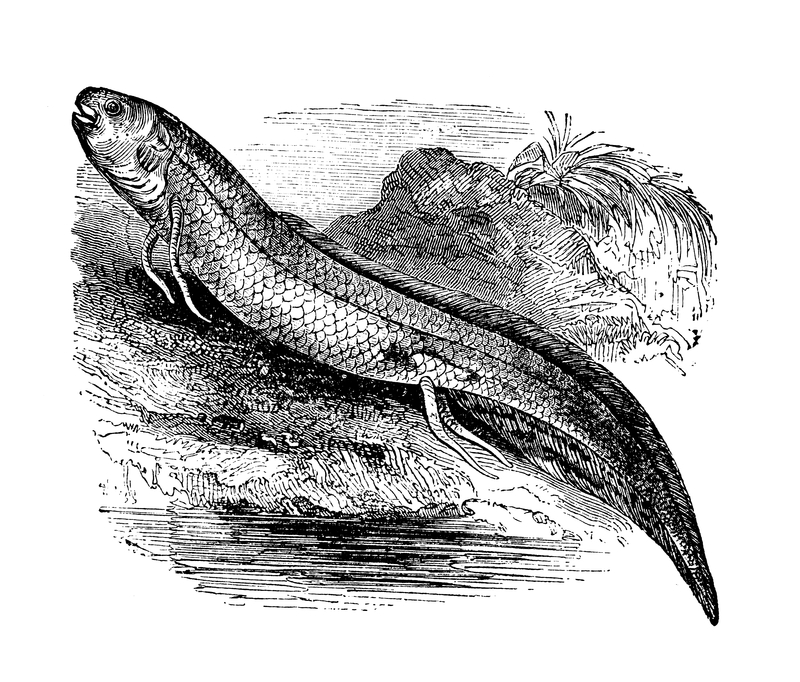
One possible explanation is that the beast is a big species/specimen of the South American lungfish. This would explain it being sighted both in and out of the water.
Fouke Monster
This creature is a swamp ape of sorts lurking around Fouke, Arkansas. Sightings describe him as 7-10 feet tall and weighing 250-800 pounds with bright red eyes. Terrifying by all accounts.
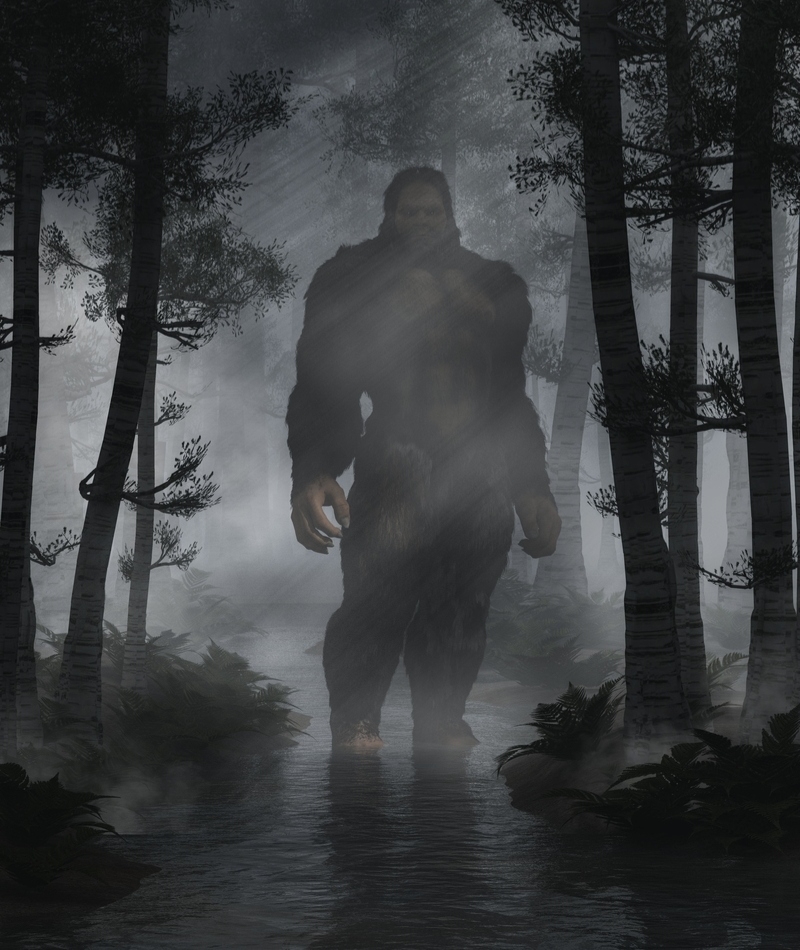
It is possible that the first sighting of this being was made in 1851, but the most substantial cluster of sightings is from the 1970s, some of which were supposedly backed by claw marks and three-toed footprints. You know what primate has three toes? No primate whatsoever! Investigations, speculations, and local lore are even more welcome at the annual Fouke Monster Festival, taking place every year since 2013.
Igopogo
Reportedly living in the waters of the Canadian Lake Simcoe, the Igopogo has been described in different ways. Some describe it as a seal-like animal with dorsal fins and a dog/horse-like face. One witness said it had two antennae, four tentacles, six legs, and six feathered appendages that were presumably gills. We couldn't make this up if we tried.

The most interesting sighting is probably the one made in 1983 by William W. Skrypetz, a sonar operator who reported spotting a big, long-necked animal that may have been it. Skeptics excuse it as a school of fish, but others take it as hard evidence.
Giglioli's Whale
Discovered (supposedly) by zoologist Enrico Giglioli, this species of whale was first sighted by him in 1870 when he was sailing by the coast of Chile. Giglioli estimated the beast to be about 60 feet long with two dorsal fins that are over six feet high.
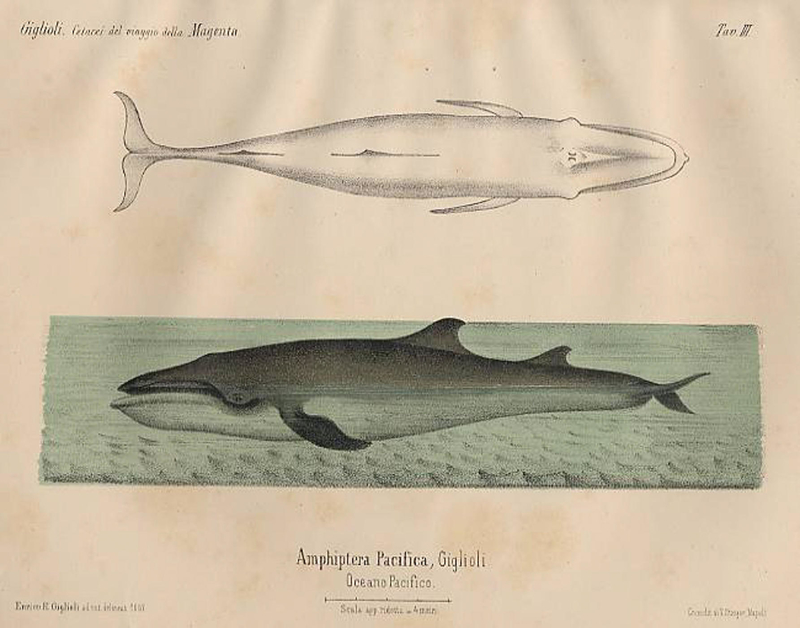
Interestingly enough, a similar creature was spotted a year later near Scotland. Apparently, the man knows his whales, having successfully reported sightings of other very real whale species — killer whales, fin whales, and Cuvier's beaked whale. While Giglioli's whale was never officially recognized, it does have a scientific name: Anphiptera Pacifica.
Platypus
When you hear an animal is described as a duck/otter/beaver hybrid, the first thing you will think is that the person you're talking to has been dabbling with a bit too much mary jane. And we wouldn't blame you. This is why it was first thought to be fake!
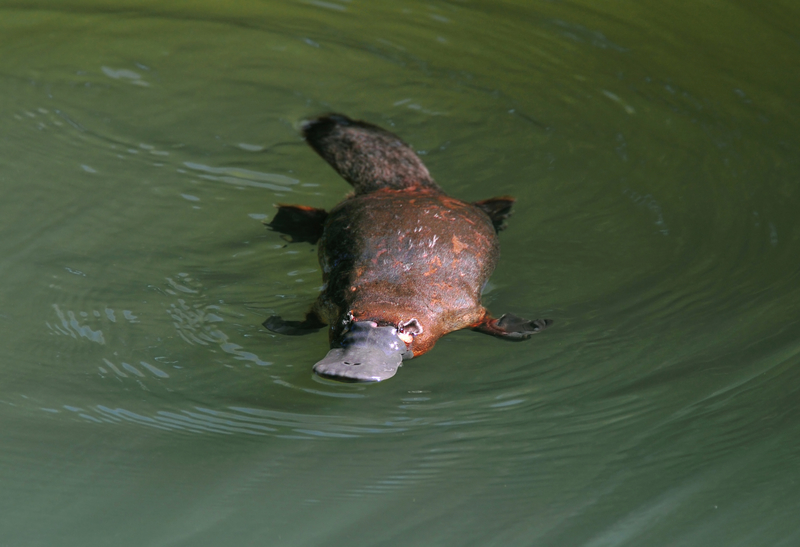
But this creature, unlike others on this list, is proven real and you can see one for yourself on your next trip to Australia. In a rare combination of biological traits, this venomous, semi-aquatic mammal lays eggs rather than giving birth to its offspring.
Lizard Man of Scape Ore Swamp
This cryptid must be what started the whole reptilian conspiracy theory. It was in 1988 when 17 years old Christopher Davis from Lee County, South Carolina, first reported the creature.
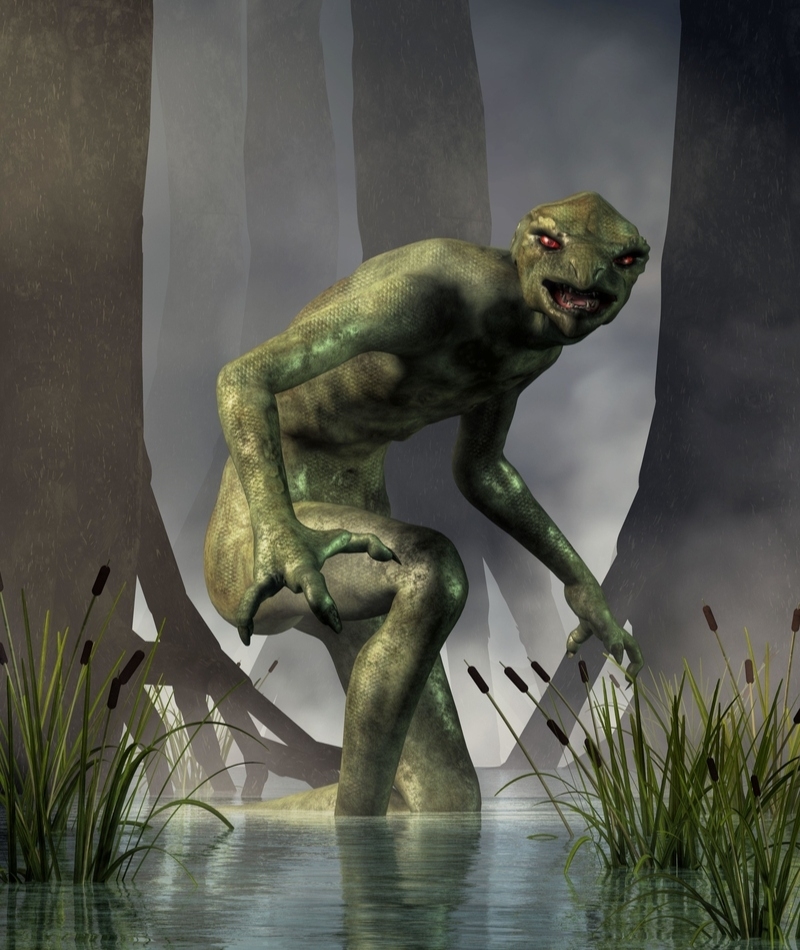
He was stopping on his way home one night to change a flat tire and saw a 7 feet tall lizard with red eyes approaching him, which understandably sent him running back to the driver's seat. The thing hopped onto the car and was shaken off when Davis sped up and slammed the brakes. Other sightings have been made since. Some were disproved, but "some" isn't all of them...
Barmanou
The Pakistani name of this beast won't mean much to you, so you should know it loosely translates to "Big Hairy One". Now you get a better idea of what this creature is.
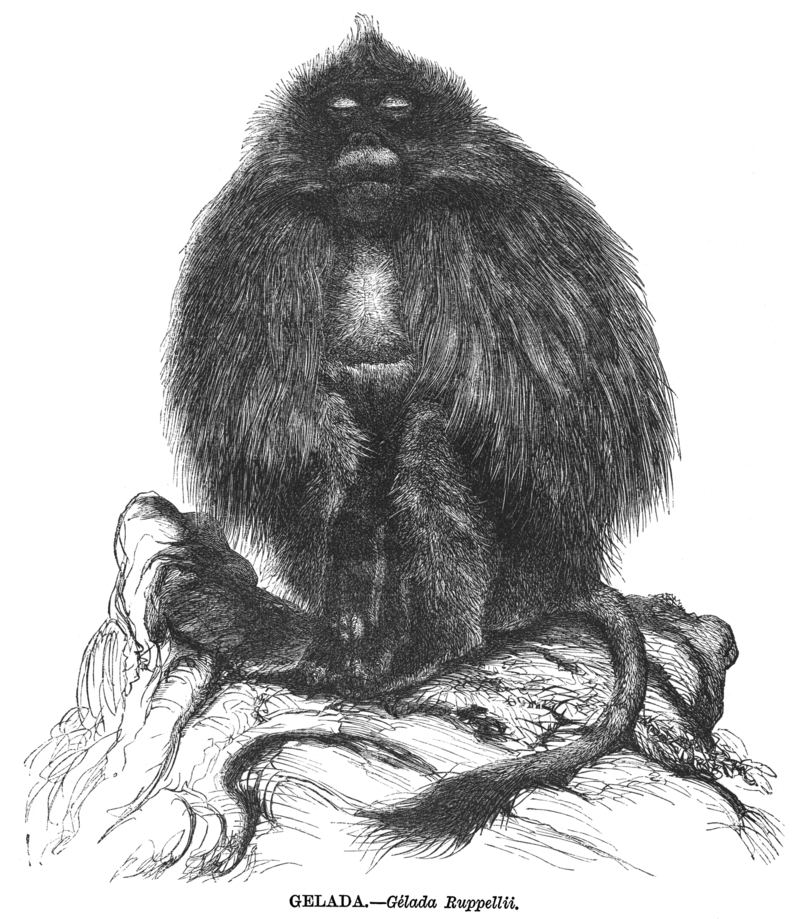
If you ask shepherds from the mountains of Pakistan about it, they will tell you it is something between a man and an ape, sometimes wearing the skin of a different animal on its back, and targeting human women to... mate with. Yeah, creepy. Even creepier is the fact that one of the most avid researchers of this being was killed before he could complete his research.
Rhinoceros Dolphin
Hmmm, a dolphin with a horn? Sounds familiar... Aren't they just narwhals? Well, not exactly. This dolphin (or dolphin-like whale) species was said to have an extra dorsal fin. Sounds reasonable enough, no? Double-humped camels are real, why not double-finned dolphins?
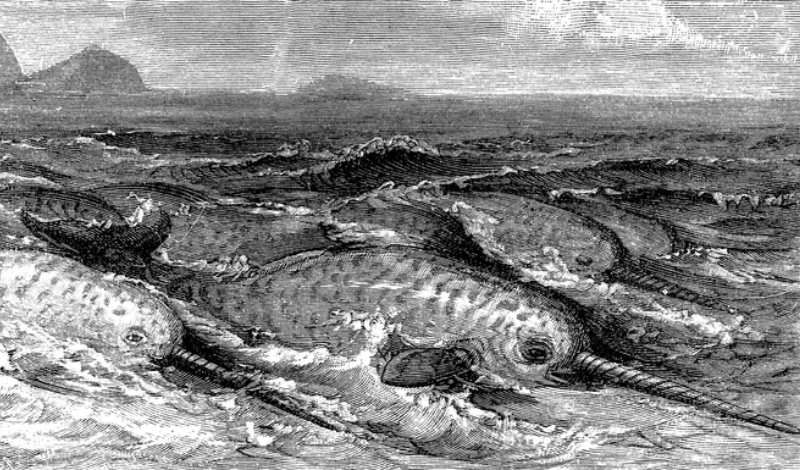
However, since the sighting was made from afar, there were many ways to dismiss it: 1. It was actually two dolphins warped by the distance. 2. It was a known dolphin species with a genetic mutation. 3. It was a misidentified beaked whale. Our favorite is option #2 but we're not here to tell you what to believe in.
Elwetritsch
From the people who gave you the most horrific excuses for bedtime stories, this German cryptid is surprisingly harmless. One of the more wholesome creatures on this list, no one claims to have seen it, but the lore around it is so extensive you'd think it's real.

Children's tales, mock hunting parties, and Pennsylvanian Dutch variations are just the tip of the iceberg. In terms of appearance, it is a flightless bird, similar to a chicken, except it has antlers and snake-like scaley skin. More recent illustrations of it also depict it as having female breasts because why not. #eyeroll.
Loch Ness Monster
Ah, good old Nessie. Mother of all cryptids. Mentions of this mysterious beast date back more than 1,500 years ago! Even though the loch has been scanned, studied, and enjoying a great deal of Nessie-enthusiasts, no modern evidence was found.
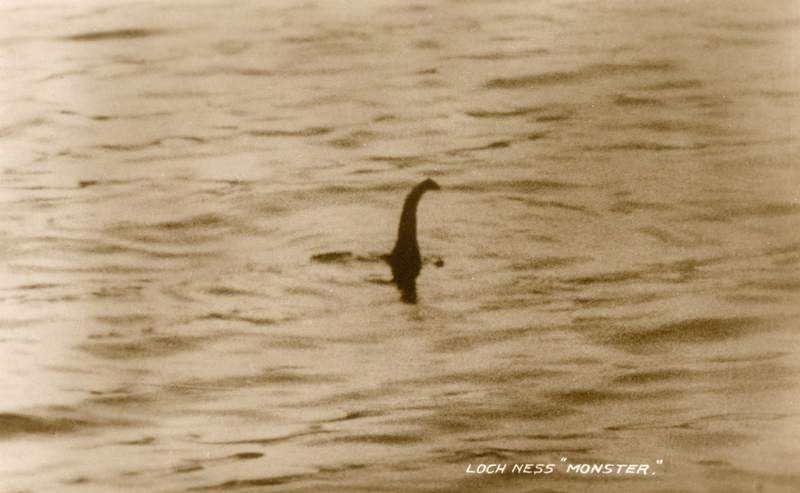
That doesn't necessarily mean it was never there, though. Speculations as to what the animal might have been during its glory days all those years ago suggest a surviving species of plesiosaurus — a dinosaur-age creature. 2019 studies of DNA samples from the body of water suggest it may have been a huge eel. Not as exciting.
Honey Island Swamp Monster
When you hear about a monster, no matter how controversial, the last place you would expect to find it is somewhere called "Honey Island Swamp". The dwellers of this place must be fairies and gummy bears, right? Not always, apparently.
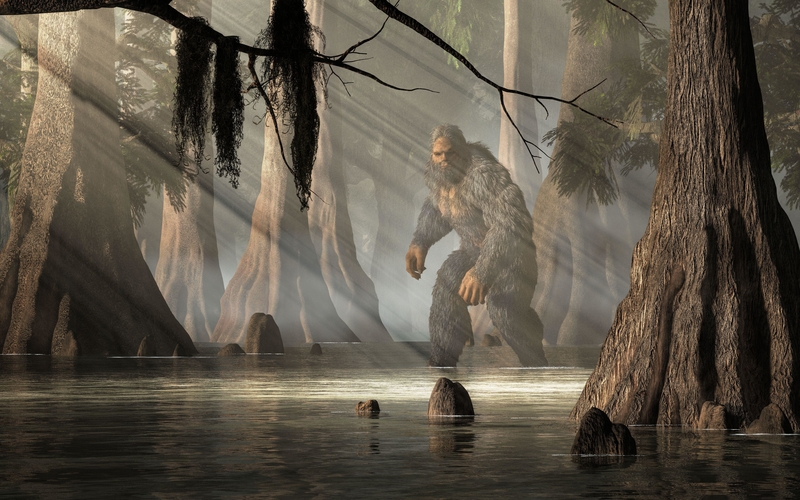
In 1980, upon the death of small-time wildlife photographer Harlan Ford, a reel of this creature was found, recorded on Super 8 film. Reportedly a 7-foot-tall ape-like being with yellow/red eyes and foul odor, Louisiana locals and tourists have been reporting it since 1963. One explanation for it is runaway circus chimps who adapted to the territory. We'll take it.
Beast of Bodmin Moor
Trust the English to call a monster a name that nearly tells you a full fairytale. This beast is a supposed big cat associated with the deaths and mutilations of livestock in Cornwall around 1978.
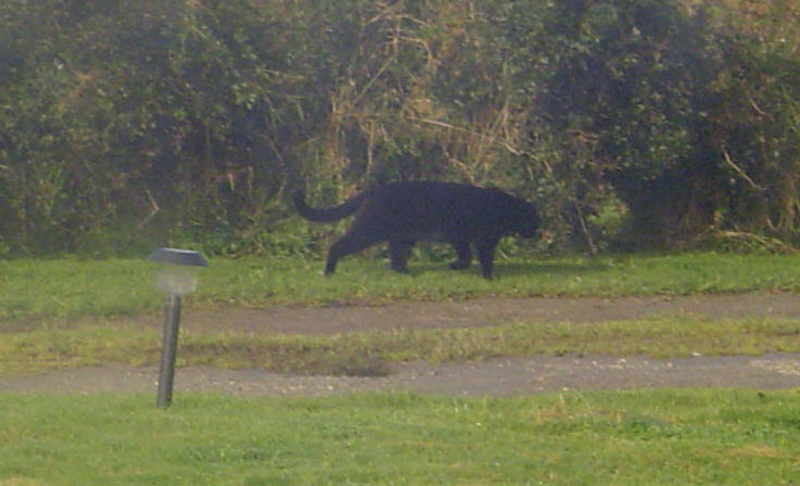
Reportedly a black panther, this doesn't sound like anything out of the ordinary. The thing is, there is no natural population of such cats in that habitat! Speculations suggest that the Beast was one or several big cats that escaped from illegal private collections and were never reported. A clear 1997 picture of a pregnant jaguar in Cornwall supports this hypothesis and our hopeful hearts.
Selma
One of the few Scandinavian cryptids out there, Selma is a sea serpent supposedly living in Lake Seljord, Norway. Mostly sighted on quiet, hot summer days, this animal has numerous described accounts, the earliest of which dates back to 1750!

It even got immortalized in 1989 as a center part on the coat of arms of Seljord. Visible in gold on a red background, this coat of arms makes Selma real enough for us.
Mothman
Everybody wants wings. Nobody wants to be a Mothman. Ugh, the double standard. Anyway, this creature was sighted numerous times in and around Point Pleasant, West Virginia between October '66 and November '67. Witnesses report a brown/gray human-sized winged being with glowing red eyes.

Most of the stories don't report the thing attacking them, but many do say it followed/watched them for a while. Skeptics say it was a misidentified gray owl. And sure, the thing can reach up to 33 inches and have a wingspan of up to 60, but how is this even close to human size?
Okapi
Once considered a myth, this one is as real as your mortal eyes reading this article. Also known as a forest giraffe, this African mammal has a chestnut-colored antelope-like front and a striped, zebra-like backside.
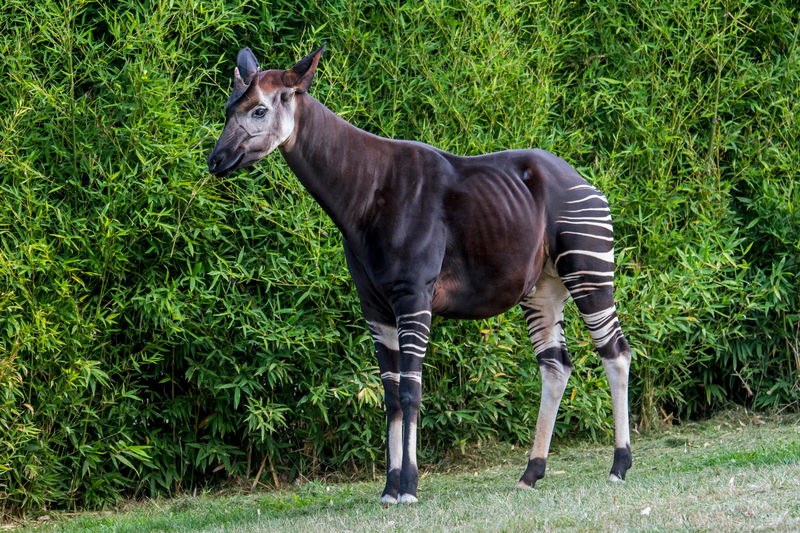
While genetically related to the giraffe, it is significantly smaller and has a shorter neck. The okapi has a long, 18-inch tongue that helps it reach the tree leaves and underground vegetation on which it feeds.
Dover Demon
April 1977 had three different people reporting to have seen the Dover Demon. Two over the night of the 21st and another one the next day. All three sightings were made in Dover, Massachusetts, by teenage boys aged 15-17 describing a creature with a big head, big, glowing eyes, and slim limbs ending with fingers that looked like tendrils.

The three drew pictures of the beast, one even signed it stating he "swears on a stack of bibles" that it's genuine. While some claim it was a misidentified baby moose or horse, we'll go with the more obvious explanation. #aliens.
Yeren
This cryptid was first a series of sporadic sightings of "hairy men" in China starting in 340 BCE! Now sure, the Chinese aren't naturally hairy, but reporting seeing someone hairy as an unusual event seems like a stretch.
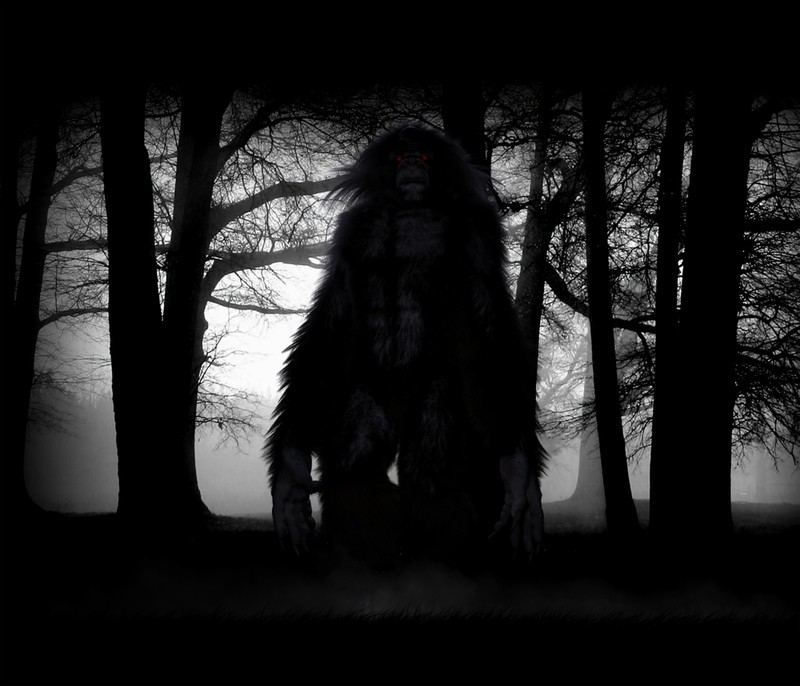
Those old testimonies describe the Yeren as strong, fast, and dangerous hominids living in the mountain caves of the Hubei forests. The violent creatures are said to have raided villages looking for food or humans to mate with. Sounds intense! Government-organized research of the Yeren started in 1976 and was never officially stopped, though all evidence found so far was traced to common animals like bears and monkeys.
Jersey Devil
Encapsulating a bunch of physical characteristics associated with satan himself, you can guess what gave this monster its name. The Jersey Devil reportedly has a forked tail, clawed hands, horns, batlike wings, and a goatlike head complete with two hoofed legs. Its loud scream is said to make a listener's blood curdle.
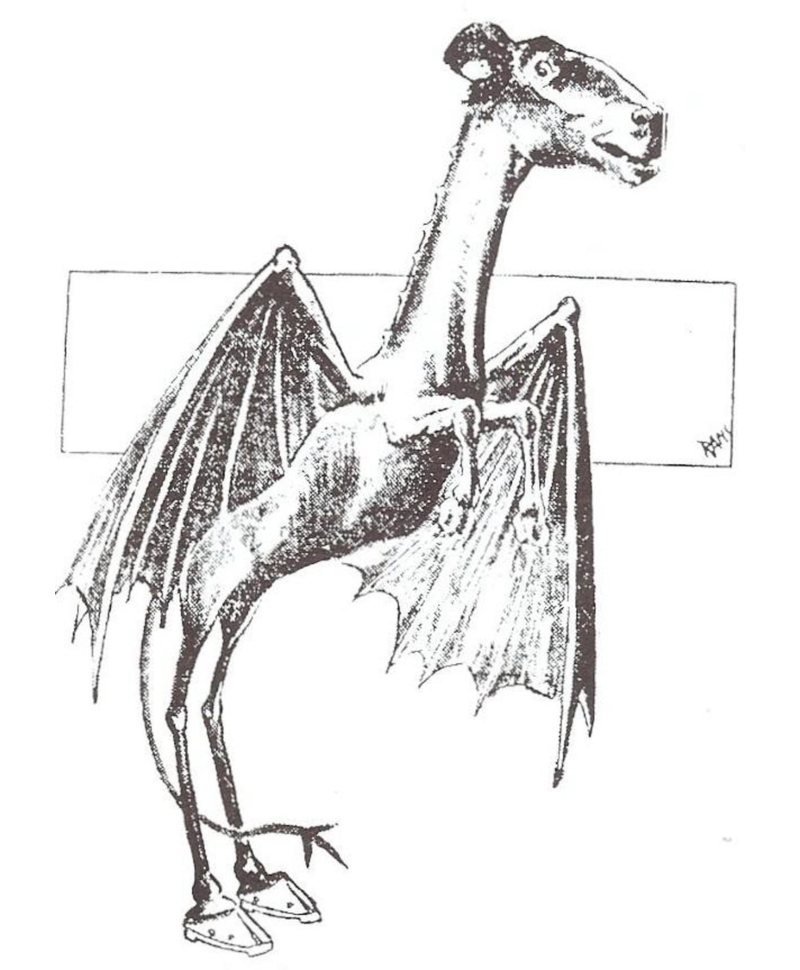
Legend has it that the creature is a cursed, formerly-human child. Super cuddly overall. While the folk-tale cloak is heavy around this creature, numerous sightings have been made over the past 200+ years. One of the sightings was even made by Napoleon Bonaparte's brother, Joseph!
Ogopogo
This sea serpent is believed to be swimming in the water of Okanagan Lake, Canada since the days of the First Nations. The first Ogopogo report of a white settler was made in 1872, and many more were reported over the following decades, with the most recent one happening in 2018.
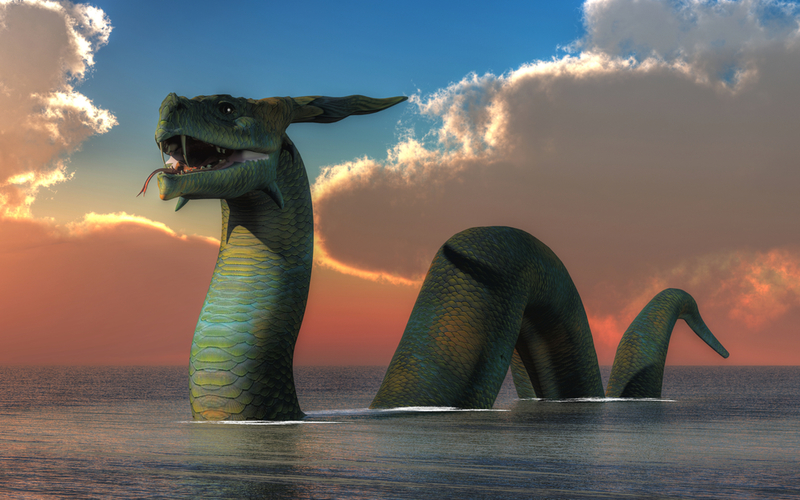
Photographic or video evidence was captured, though none was close enough to serve as proof for nonbelievers. Those nonbelievers would rather stick to the narrative of misidentified local fauna like otters, waterbirds, or beavers. They must be fun at parties.
Yowie
Coming from the Land Down Under, this cryptid's sightings date back to the indigenous inhabitants of the continent. While it could definitely be some sort of native Australian version of Bigfoot, the details are inconsistent.
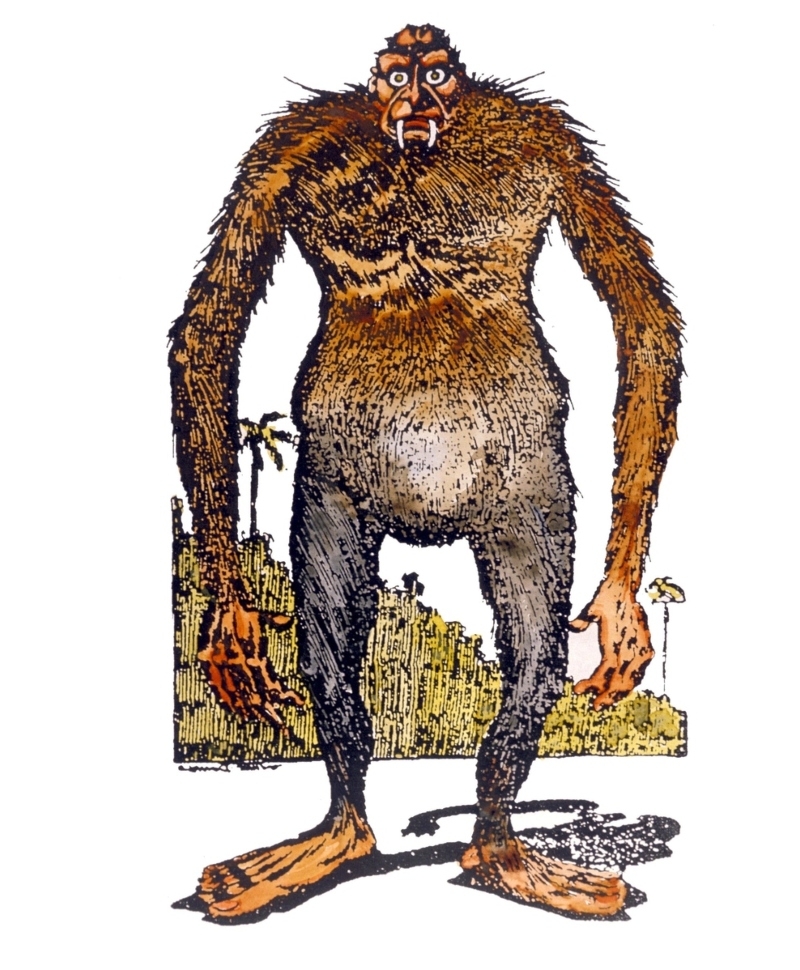
There is consistency, however, in its ape-like characteristics. Human-sized or bigger, covered with hair, and long-armed, it's sometimes described as shy and sometimes as aggressive. One way to explain this alleged animal is that the sightings are actually of different species of extinct ape populations, which, to some, sounds surprisingly reasonable.
Dobhar-chú
Dogs and otters are almost universally considered cute. This is why it's so weird to hear that an animal nicknamed 'water dog' or 'king otter' is essentially a monster.
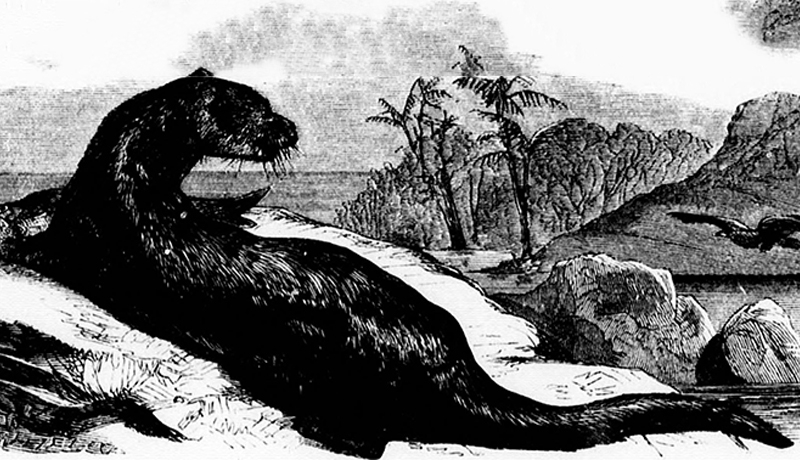
Originating in Irish myth, there is one reported case of it attacking a human. Dating to the 17th century, the case involves a Dobhar-chú killing a woman who was washing clothes in a lake and her husband killing the monster and its mate in retaliation. The woman's tombstone, found in a Glendale cemetery, has the beast carved into it, which is in pretty poor taste if you ask us...
Monkey-Man of Delhi
Unlike other cryptids in this article, reports of the Monkey-Man from Delhi only started surfacing as recently as 2001. Locally named Kala Bandar, there are more than 350 sightings of it, plus about 60 injuries attributed to its attack.
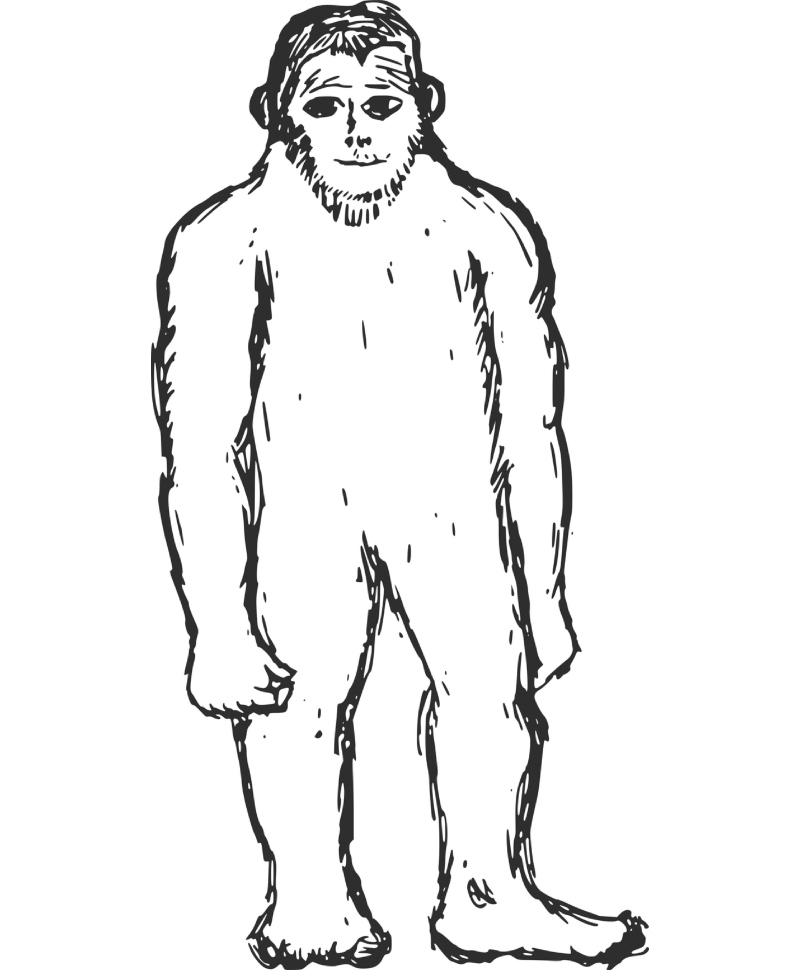
The police never caught it, but it's not for the lack of trying... Civilian reports just had inconsistent details: some say it was naked, some say it wears a helmet, some say it was 4 feet tall and some say it was 8 feet tall. One account even said it was wearing roller skates! That's a stretch even for us.
Labynkyr Devil
Local folk tales seep into real-life sightings in Russia's Labynkyr Lake. The locals who have been living there for generations have heard tales of the dreaded "Labynkyrsky Chert" but the first modern research on the matter was in 1953.

Geologist Viktor Tverdokhlebov and his party collected samples from the lake and found jaw and skeleton remains but those didn't help them prove or disprove the legend. Nonbelievers say it's just a really big pike, but that sounds too unreasonable to support the old accounts of something large enough to shake a boat and then drown it. Perhaps a Russian Kraken?
Loveland Frog
Would you like to meet the sweet Toad and Frog in real life? Loveland, Ohio might be just the place for you! Though don't count on it, since the main two sightings of a giant, bipedal humanoid frog in the area were easily explained.
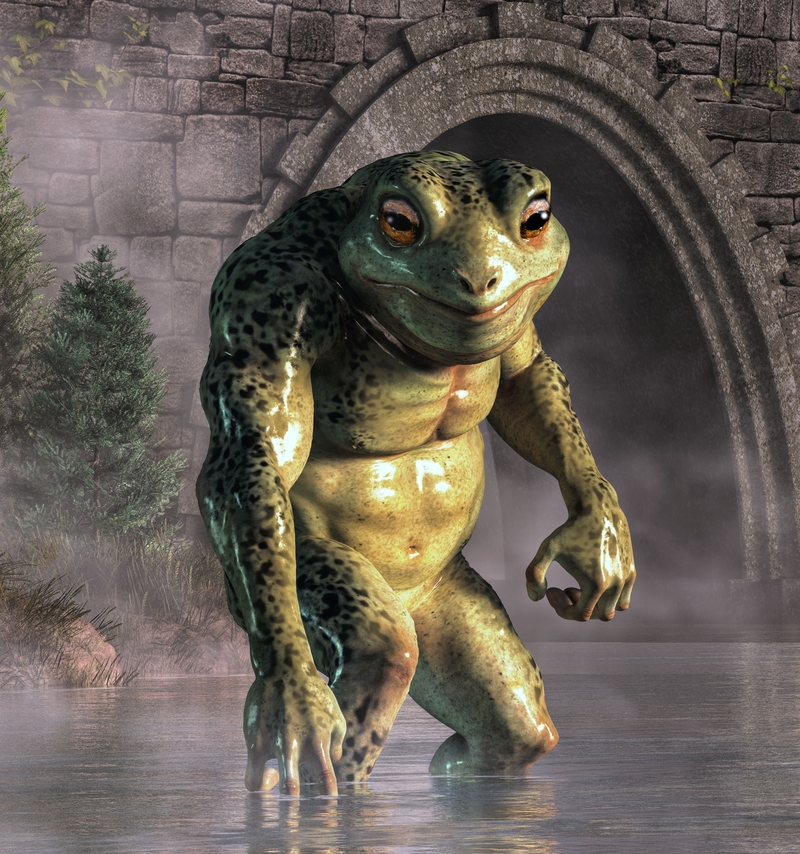
The 1972 sighting made by a local cop turned out to be a big iguana with a missing tail after a different cop shot it two weeks later. The 2016 sighting was made by two teenagers who encountered the creature while playing Pokémon Go, but this one turned out to be a local college kid in a costume. What a troll.
Michigan Dogman
Dogman? More like a werewolf! How else would you call a terrifying howling half-man half-canine? This monster has been terrorizing Michigan since 1887 and even decorates the lore of the local native tribe of Odawa.
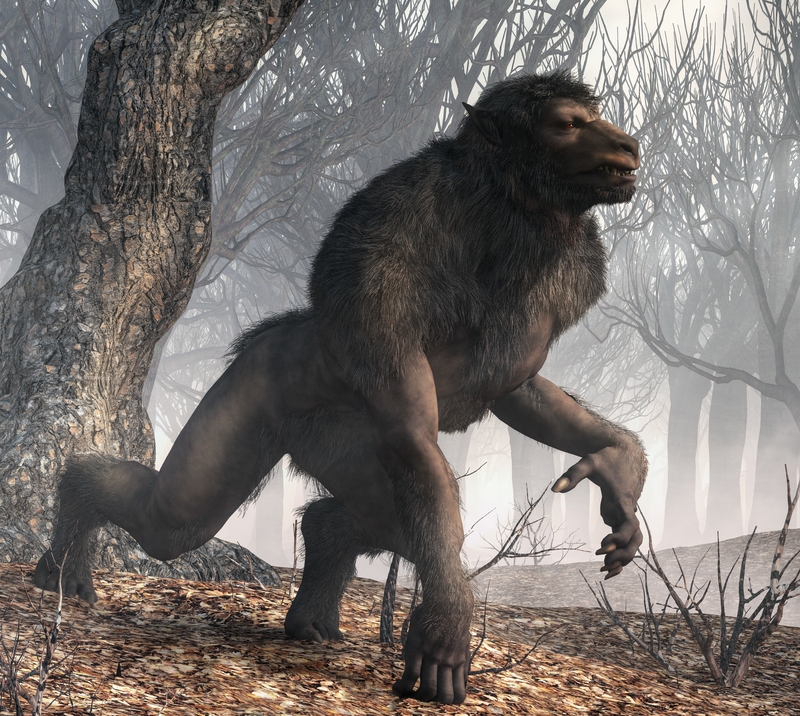
Unlike the usual werewolf myth that says the monster's appearance occurs once a month during a full moon, the Michigan Dogman sightings surface in a 10-year cycle. If rumors are true, Wisconsin may be the home to a relative of the creature — the Beast of Bray Road.
Orang Mawas
The first recorded sighting of the Orang Mawas dates to 1871. Reports describe it as a huge hominid, about 10 feet tall, covered in black hair. Living in the Malaysian jungle of Johor, it is said to feed on fish and fruit from local orchards.
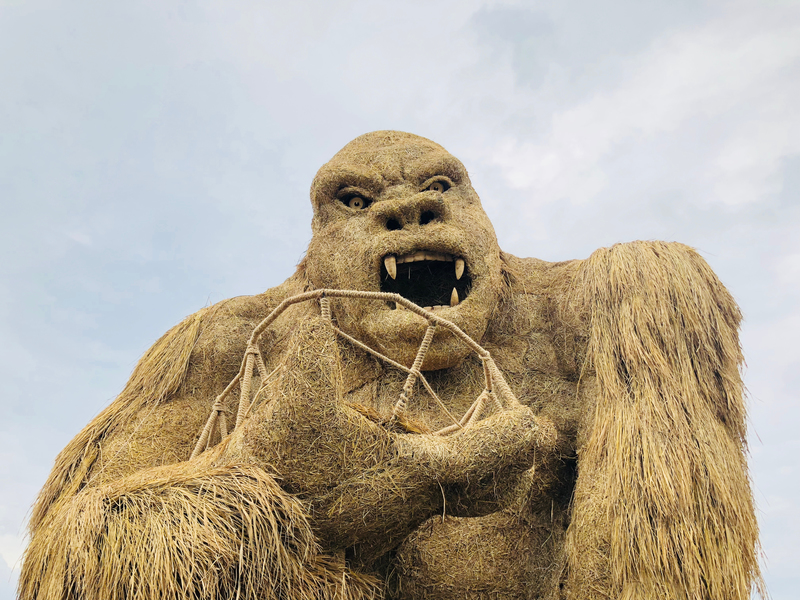
Malaysia's Orang Asli people (a native local population) have been telling tales of the Mawas for generations! It has been suggested that the thing is a surviving Gigantopithecus (an extinct species of huge ape), which sounds pretty exciting. Another suggestion dismisses all the reports as misidentified sun bears, which doesn't sound exciting at all.
Champ
A name like that usually brings about a picture of a friendly dog fetching a ball. But this cryptid is just named after Lake Champlain, where it lives, and where it's been sighted more than 300 times.

Sure, there are those who excuse Champ as just a big sea serpent, but any photo/video/audio captured points in a different direction. One direction is a plesiosaur-like creature a-la Nessie. Another direction is a Beluga or a dolphin, though neither lives in that lake. The third speculation, based on gator-like tracks, suggests that Champ is a type of crocodile, sturgeon, or longnose gar.
Barghest
A scary big black dog from England? Hmmm... Are we sure we aren't talking about Sirius Black from the Harry Potter books? Apparently, big scary black dogs are pretty common in English folklore. Reportedly having glowing fiery eyes, the myth links them to death in one form or another.
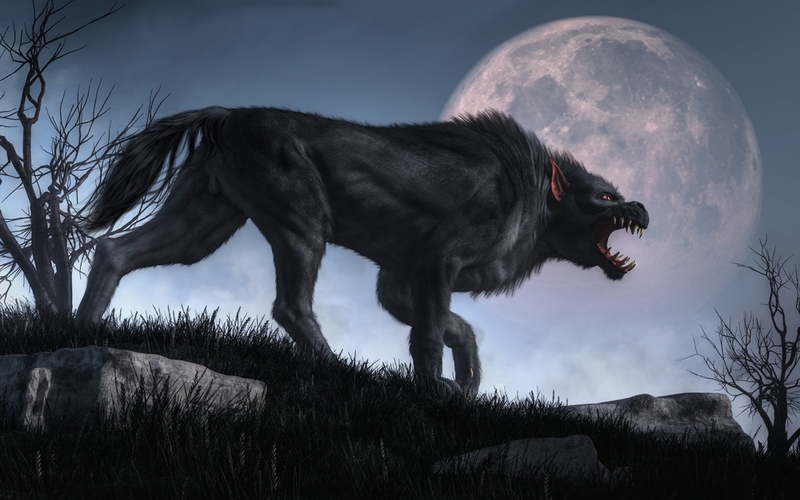
The Barghest, has been supposedly sighted around Darlington in the 1870s, where people said it could shapeshift from a dog into a headless human or a white cat. Um, yeah, we want to believe, but we're gonna chalk that up to whatever mushrooms the 1870s people had in their salad.
Beast of Exmoor
While the Exmoor National Park labels this beast under "Legend", there are way too many people who claim to have seen it with their own eyes or blame it for the death of their livestock. Some even claim to have seen it trying to catch fish in the River Barle.
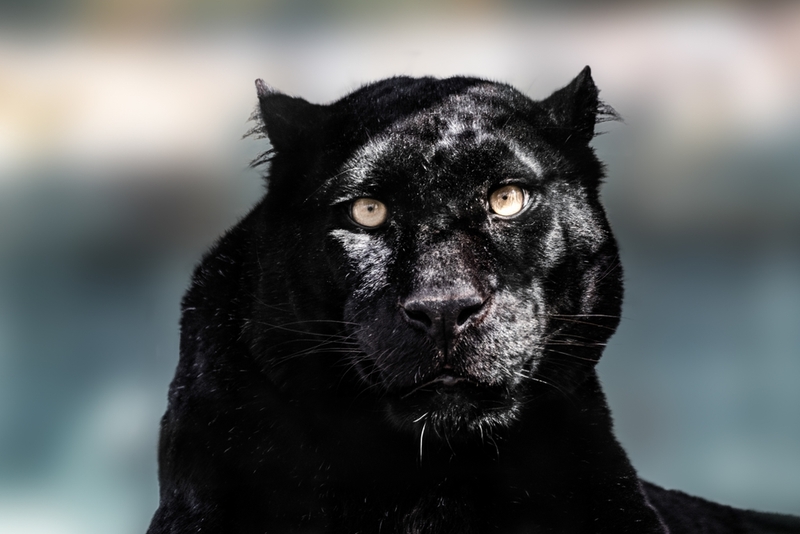
Despite big cats not being natural inhabitants of the area, eyewitnesses describe the Beast of Exmoor as similar to a panther or a puma. A pretty reasonable explanation is that there is a small regional population of big cats made up of previously owned animals that were released once it became illegal to privately own them.
Skunk Ape
Well, there you have it. You don't need more than the name to understand that this cryptid is a big hominid that could use a shower. Wandering in the swamps of Florida, the Skunk Ape has supposedly been around since the 1950s with sightings reported until today.
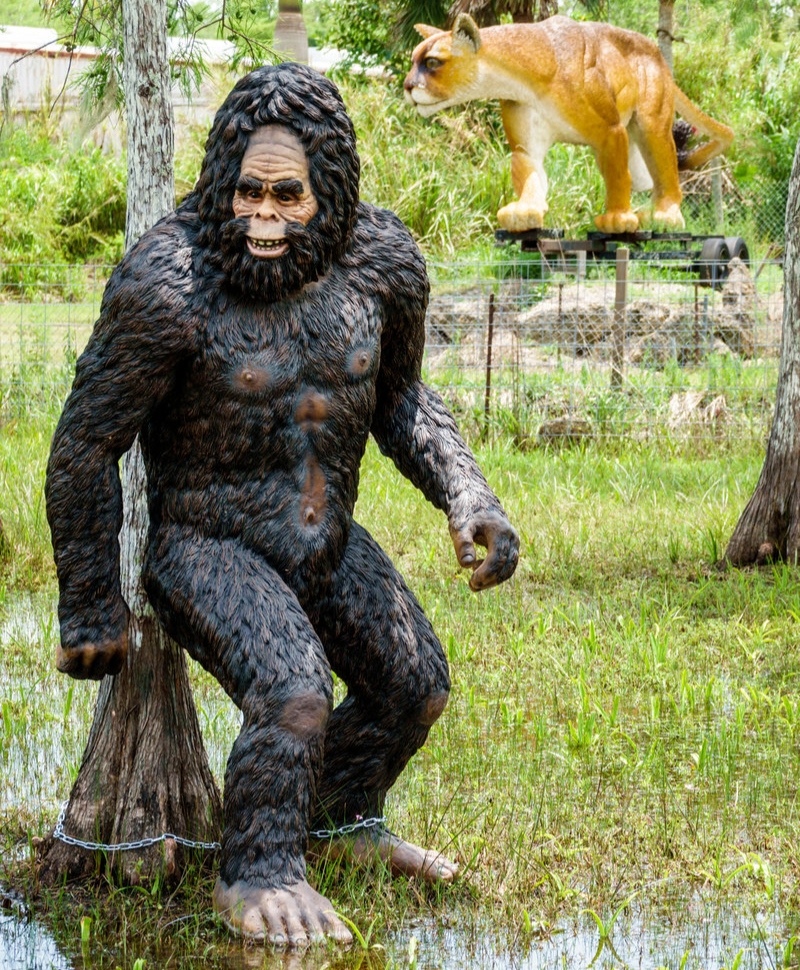
They all come down to a bigfoot-like creature with dark fur and a foul smell (for those who claim to have been close enough to smell it). Unlike many entries on this list, this one has lots of photos, though, of course, none is either close enough or properly authenticated.
Almas
Sighted in the mountains of the Caucasus area, Central Asia, and western Mongolia, the Almas has its roots in local tribal folklore. However, those roots are apparently based on sightings of a fearsome, ape-like creature with long, black fur with terrible strength that even hunters didn't dare attack.
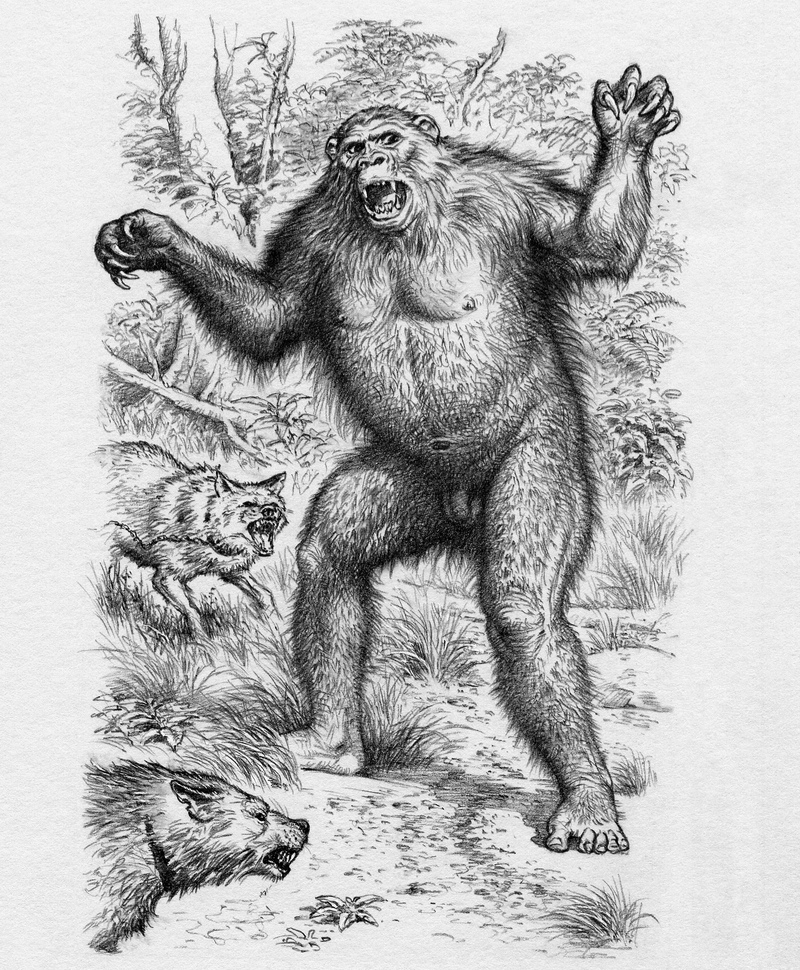
A 2014 study claims that the beast comes down to a collection of misidentified bears, horses, and cattle, which is pretty boring. A 1964 Soviet scientist suggests that the Almas are a relict population of Siberian Neanderthals, which is undeniably way cooler.
Brosno Dragon
Finally, dragons! Sure, it's a water dragon so it doesn't breathe fire, but we'll take it. This one is said to be living in Russia's Lake Brosno and locals have been telling tales about it since as early as the 13th century.

This beast is rumored to have even helped during WWII by swallowing up a whole German airplane! Skeptics attribute sightings of the animal to misidentified beavers or a giant pike, but even those aren't big enough to swallow an airplane chair, let alone a full plane.
Bigfoot
We couldn't have gone through this article without giving Bigfoot his own entry. This huge ape needs no introduction, but trust us to introduce him anyway.
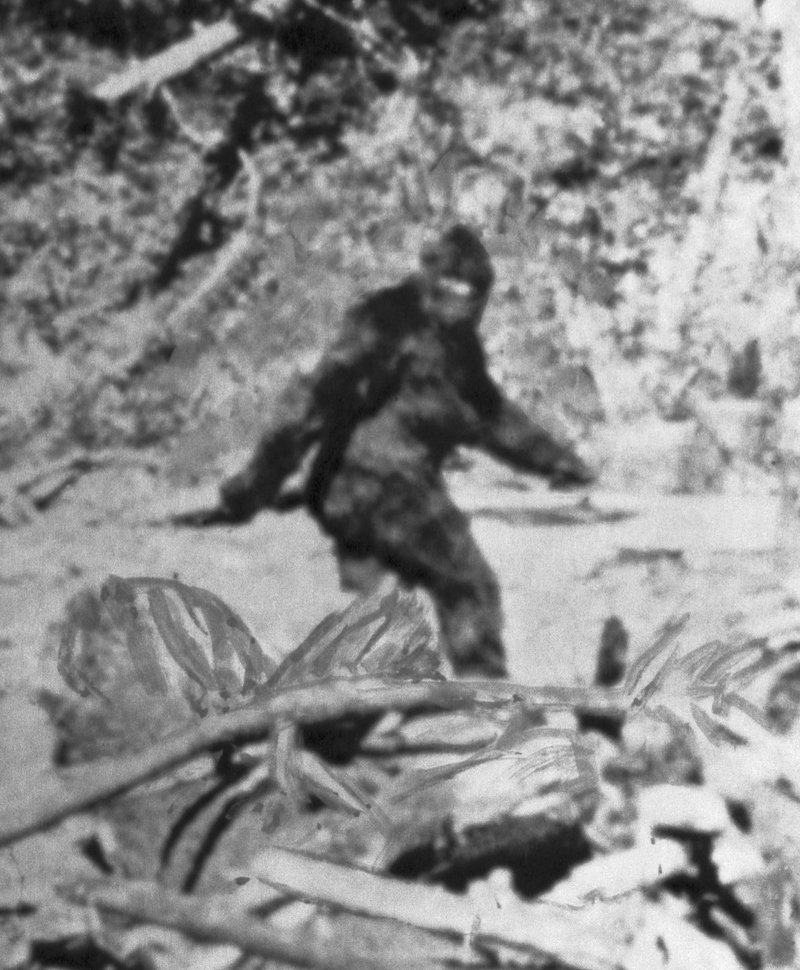
Also known as sasquatch, this fabled creature has been sighted numerous times in the US and Canada, always described as something between a man and a gorilla. While researched extensively, evidence collected was unable to be authenticated, has been fabricated, or simply led to animals we already know. That doesn't stop people from believing, though!
Kusshii
Scotland's Loch Ness has Nessie, and Japan's Lake Kussharo has Kusshii! Hardly a lake "monster", this animal has been sighted multiple times between 1973 and 1997 and wasn't usually described as aggressive or malicious.
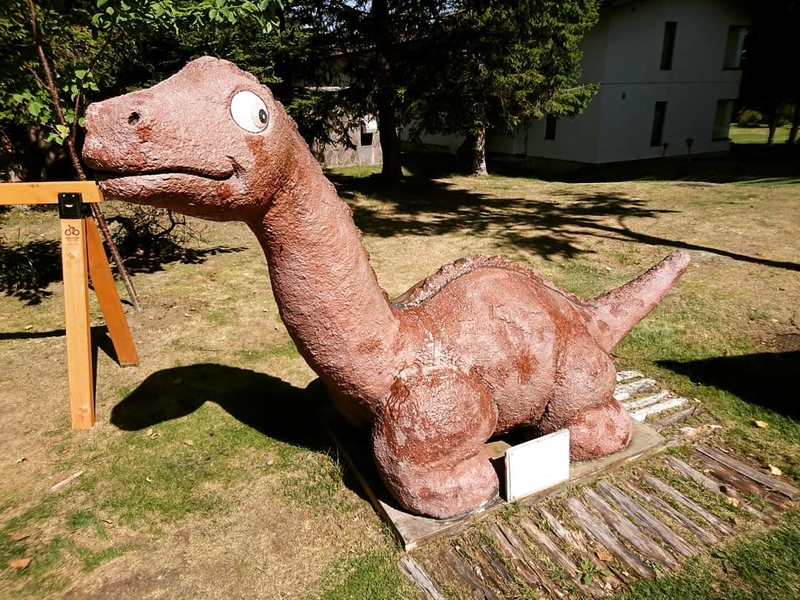
Biologically speaking, skeptics find it impossible for Kusshii to be real as the lake doesn't have enough fish to feed such a creature. Also, because the lake is volcanic, post-eruption sulfur water would make it even harder for any animal to survive there.
Manipogo
Named after its home of Lake Manitoba, Canada, the Manipogo is described as long and brown with a sheep-like head and humps that are visible above the water.
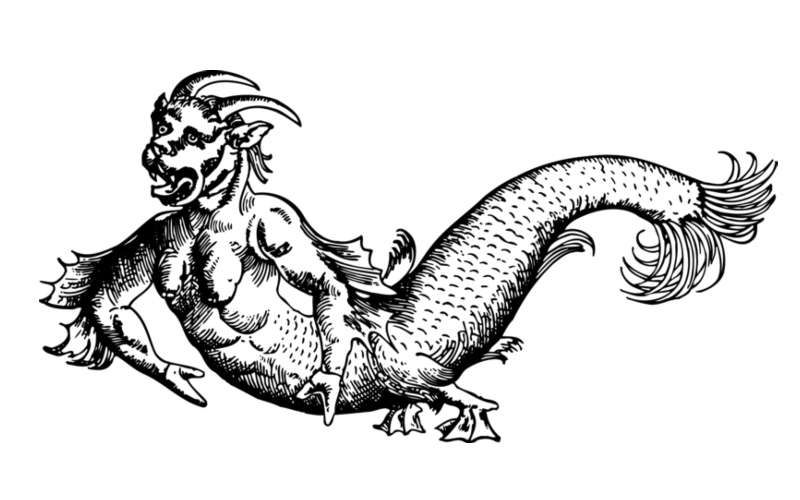
While no physical evidence like bones or carcasses has been found, Manipogos seem to have been around for a long time. Native populations have legends of the creature that date back hundreds of years, but they merge well with modern sightings as recent as 2011!